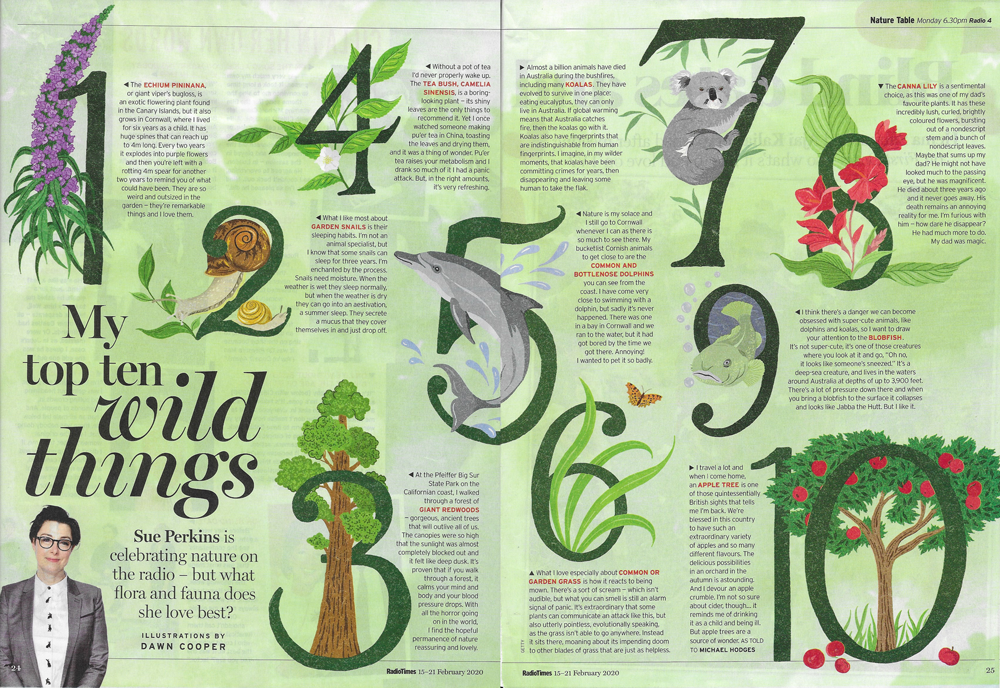Brief
Identify a piece of work by an illustrator you admire, whose work you find some connection with. You might, for example, choose a particular illustration because you admire its conceptual or narrative dimension.
Now try to write the brief for the illustration you’ve chosen. Starting from the context in which the illustration is positioned, write the brief which would lead to the creation of the image. Direct the illustrator in terms of what content should be included. If the context has text, identify the connection between the image and the written content.
Advise the illustrator about the role the image will perform. Consider whether it is extending the meaning of the text, decorating, informing or educating and potential ways this can be achieved. What colours? What flavour?
Be clear about who you think the intended audience for the illustration is.
Briefly indicate which stylistic aspects you admire. Describe the effects that you would like to see in the image, which aspects of distortion, and what use of tools and materials is appropriate to the idea.
Chosen Illustration
The illustration I have chosen to write a brief for is a double page spread from an article in the Radio Times magazine (15-21 February 2020 edition). The illustrator is Dawn Cooper I chose this work as I was drawn to the way Dawn incorporated each illustration into the numbers. I thought this had been done in an imaginative, considered and visually effective way. I particularly liked the ones for numbers 2, 3 7 and 9.

My Brief for Chosen Illustration
An illustration is required for a double page spread in an edition of the Radio Times, as part of an article advertising the Radio 4 programme ‘Nature Table’. The title of piece is “My Top Ten Wild Things” and is a numbered list of the presenter, Sue Perkins, favourite animals and plants. A description of each choice will be included, alongside a personal reason for each one.
Each plant/animal requires an illustrative representation, which will be placed alongside its corresponding block of text (description). The numbers, 1-10 should be prominent on the pages and could form parts of the illustration.
The role of the images is to illustrate the animal/plant being discussed in the accompanying text, in a way that is pleasing to look at and entices an individual to read the text (and tune in to the show!).
The images will both decorate the page in a aesthetically-pleasing way whilst also educating (or reminding) the reader of what the named animal/plant looks like.
The colours should be reflective of nature – perhaps using green as a dominant colour – and not distract form the text. Please keep in mind that the printed article will be in CMYK colour.
The layout of the illustrations should be dynamic, i.e. not a ‘stagnant’ list.
The audience will be regular (and prospective) Radio Times customers (mostly aged over 35 year olds). The article is promoting the radio show to potential listeners, who will most likely be nature-lovers, but the use of interesting facts/illustrations could entice a wider audience.
The style is up to the illustrator, but the context of the article within the magazine and its readership should be taken into consideration.
The choice of tools/materials, again, is up the illustrator, but must be compatible with the final production of the article/magazine, i.e. print.
Sources
Perkins, S. (2020). My Top Ten Wild Things. Radio Times. February 15-20. pp.24-25.
Statista, (2020). Radio Times: Monthly Reach By Demographic UK 2019 | Statista. [online] Available at: https://www.statista.com/statistics/379346/what-s-on-tv-monthly-reach-by-demographic-uk/ [Accessed 21 March 2020].